Bio of Food in Health/Disease
1/50
Earn XP
Description and Tags
Name | Mastery | Learn | Test | Matching | Spaced |
|---|
No study sessions yet.
51 Terms
Nutrition
The science of foods, the substances they contain, their actions within the body and the implications of food and eating.
Developing narratives
may be based on what physician hears or what patients think nutrition is supposed to be
-understanding the patient's story as part of a larger story.
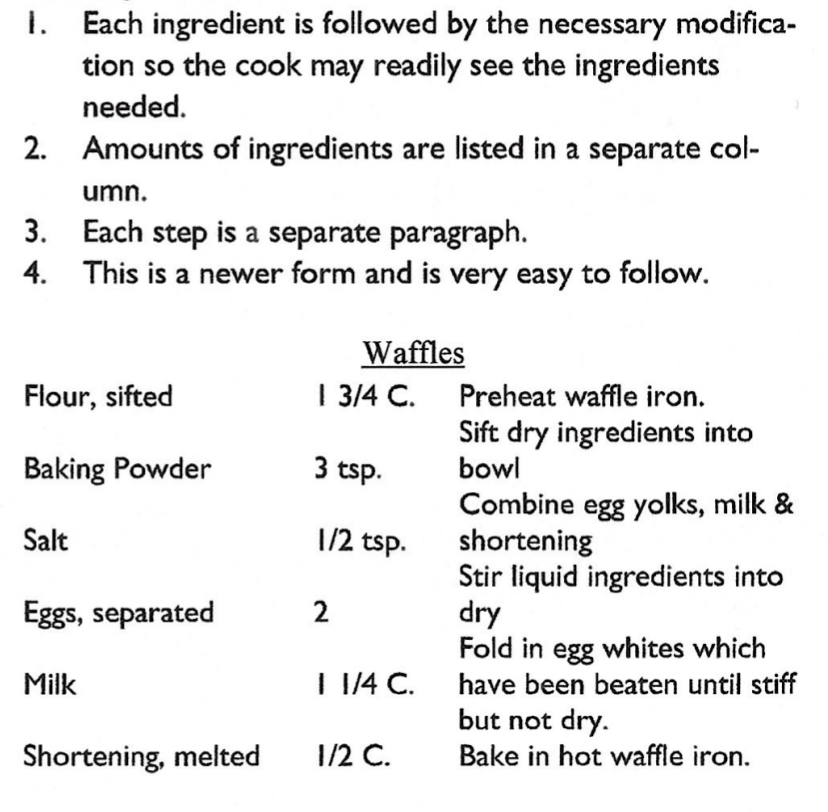
Descriptive
displays the ingredients, amount and directions in three columns, side by side.
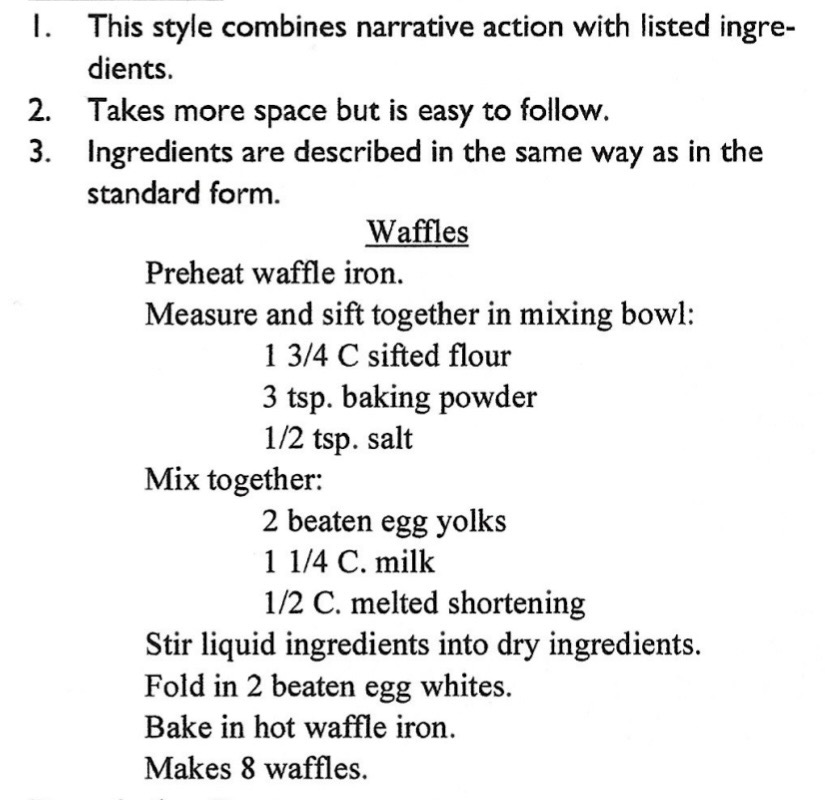
Action
gives the instruction followed by the ingredients for that step only.
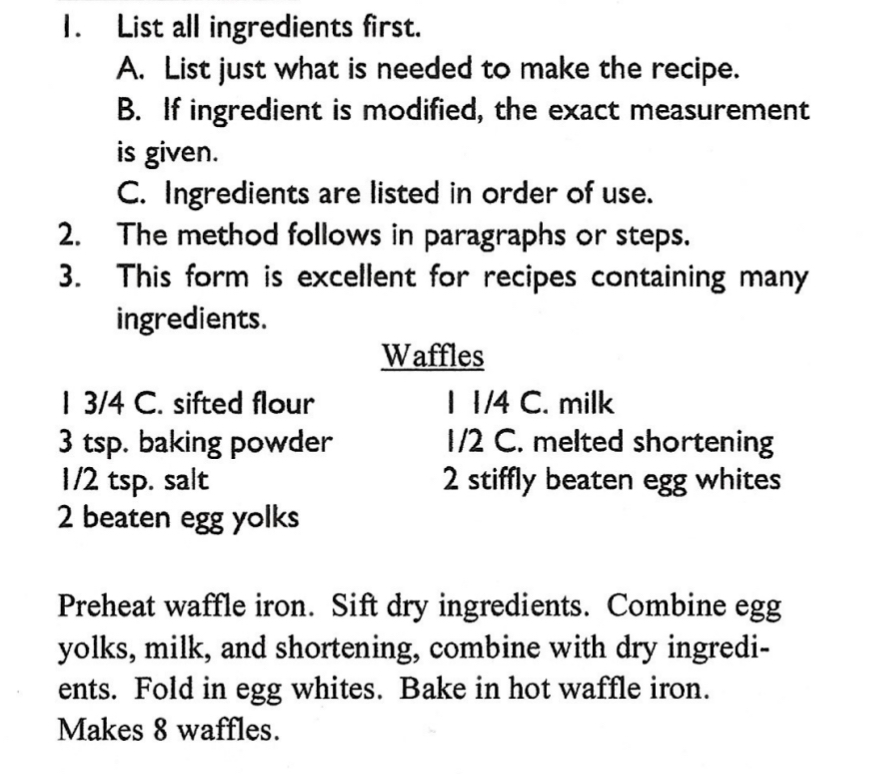
Standard
lists all ingredients and amounts with the instructions in numerical order.
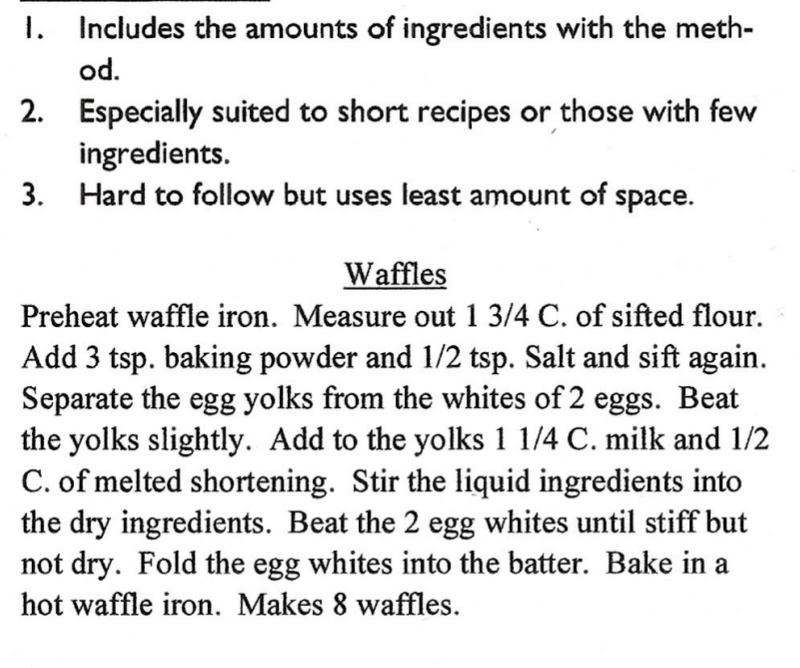
Narrative
explains ingredients, the amounts and preparation methods in text form, like an essay.
Volume
measures the space filled by an ingredient; weight measures the heaviness of an ingredient. Fluid ounces measure only volume.
Liquids
use a transparent measuring cup on a flat surface (read meniscus except for milk); lightly oil cup first for viscous liquids.
Solid fats
use a fractional measuring cup; press down and level.
Sugar
use fractional measuring cup and level; pack brown sugar and sift confectioners’ sugar first.
Stirring
mixing all ingredients using utensil.
Blending
thoroughly combine two or more ingredients until smooth.
Beating
ingredients are moved vigorously until they are smooth.
Handling
curl fingers of guiding hand inward (“claw”) and allow ½ barrier of food between blade and fingers.
Slicing Technique
start with blade tip down; press down and forward simultaneously to slice.
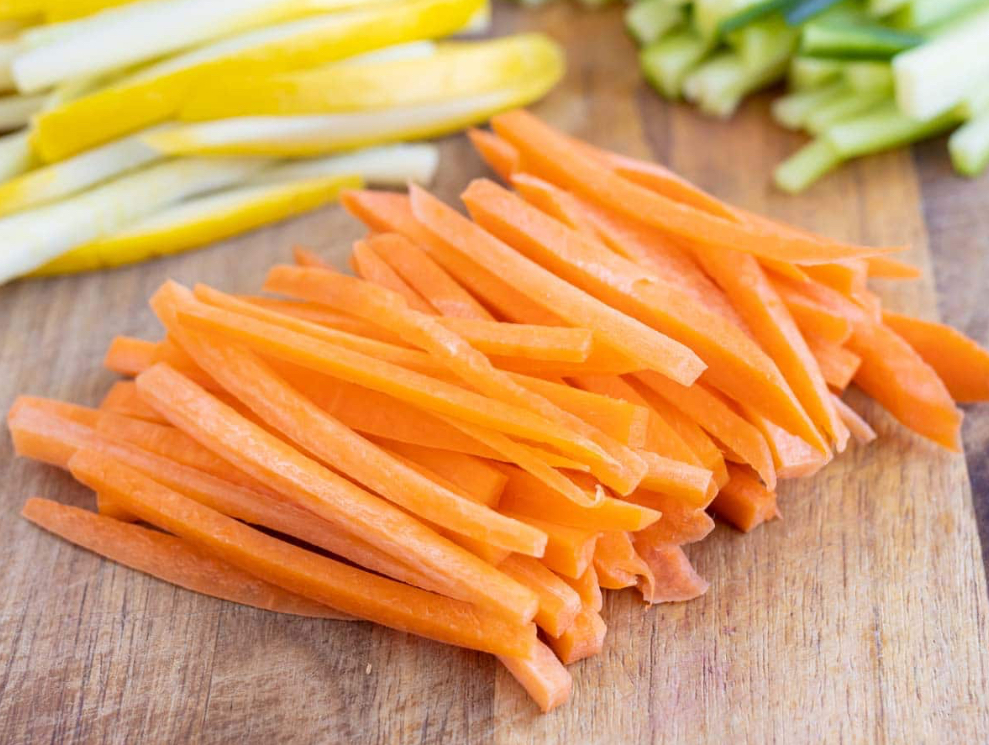
Julienne
long uniform strips. (sticks)
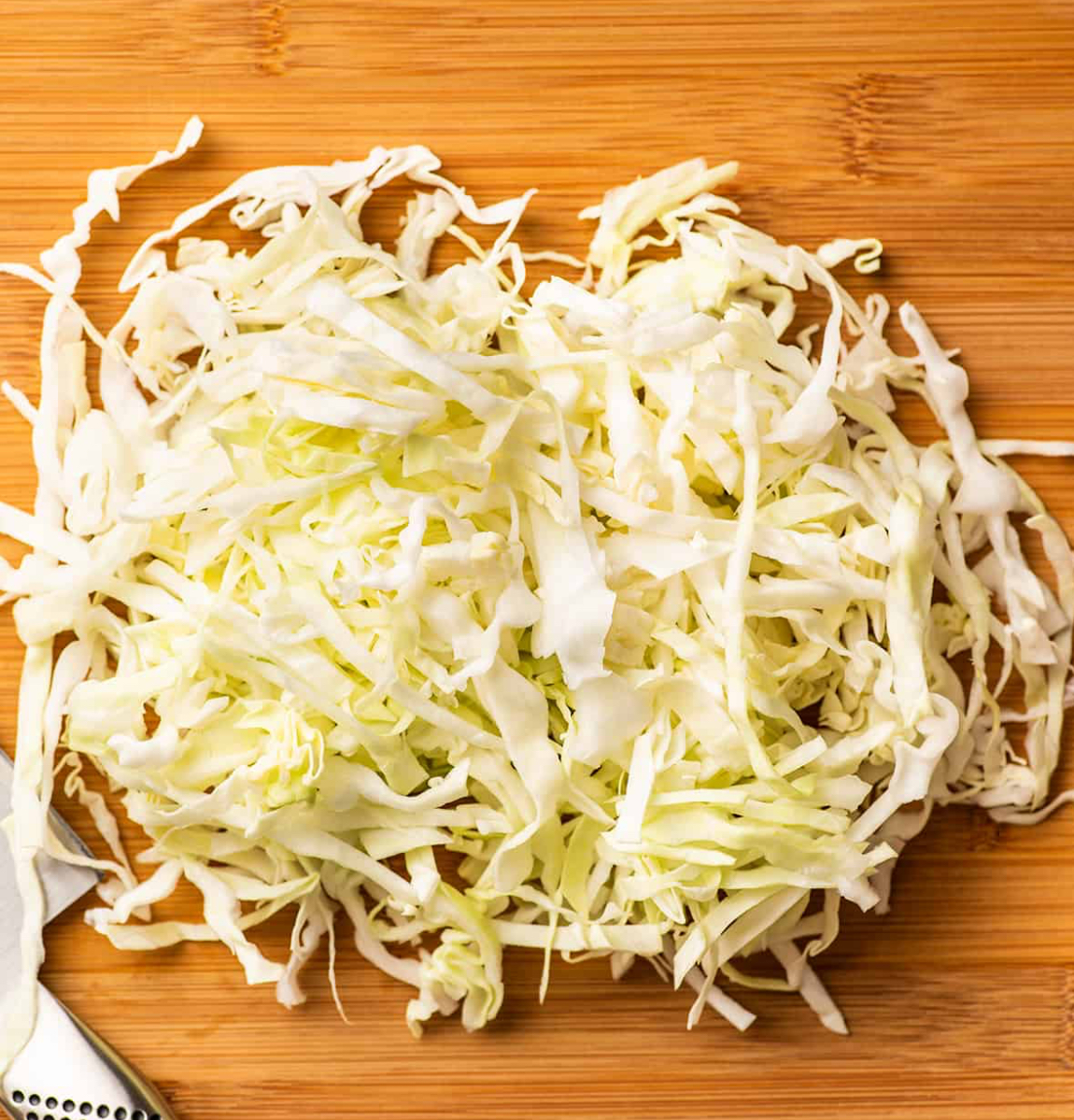
Shred
strip cut. (thin strips)
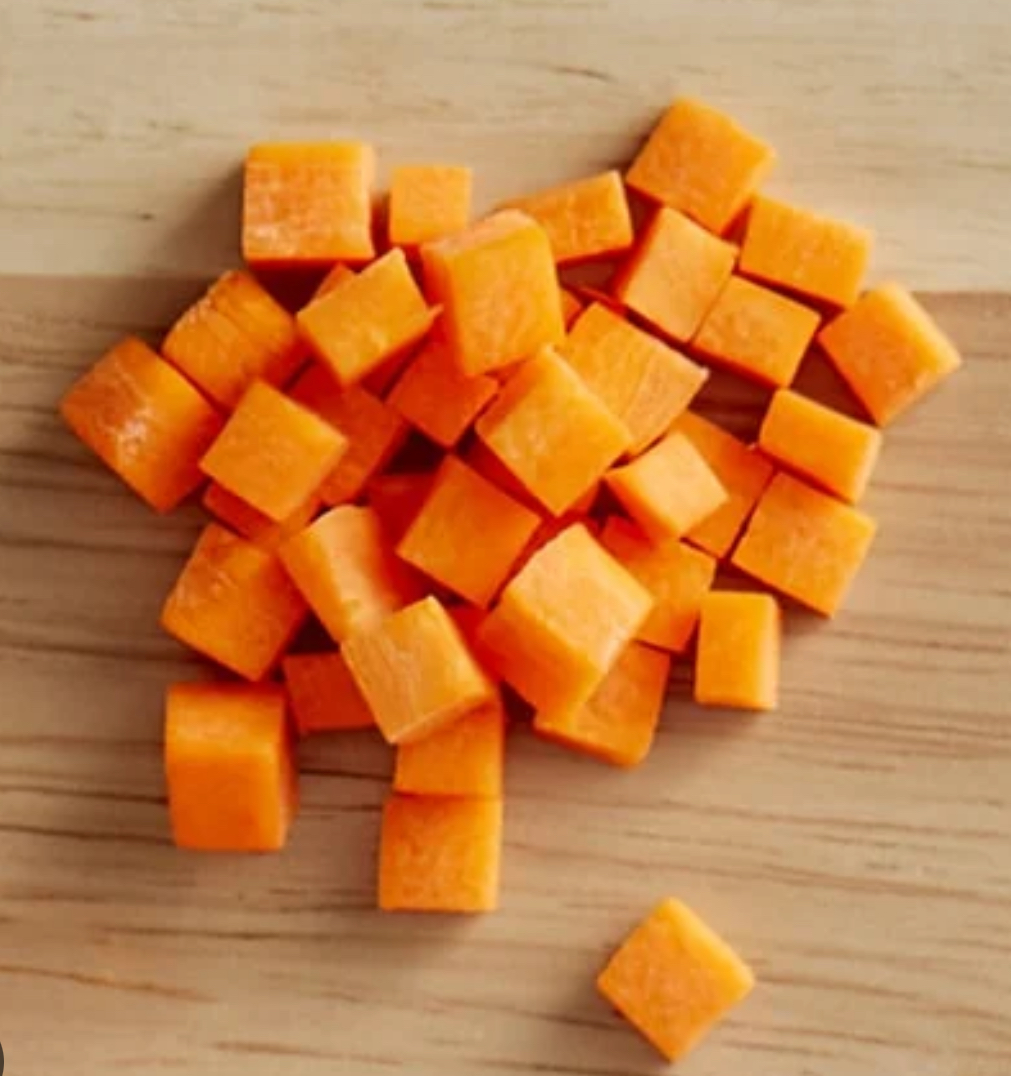
Dice
uniform squares. (small sized cubes)

Mince
finely cut. (very thin pieces)
Peel
remove the outer layer (skin) of a vegetable or fruit.
Poaching
heats water to 160-180 F; small, motionless bubbles form on the bottom of pan (good for delicate foods)
Simmering
heats water just below boiling, bubbles rise gently and barely break surface (good for rice, soups, stews, no boiling over)
Stewing
simmering small pieces of meat in a small amount of liquid that becomes a sauce; pot is covered.
Braising
like simmering but with larger cuts of meat.
Boiling
rapid bubbling at 212 F; good for tough vegetables (blanching sets color/loosens skins, slows enzymes by dipping food briefly into boiling water)
Steaming
heats food by direct contact with steam.
Microwaving
uses both dry-(radiation) and moist-heat methods.
Baking
heats food by hot air in an oven; rack height/ pan color matter
Roasting
like baking, often meat/ poultry.
Broiling
cooks foods under intense heat for brief time.
Grilling
cooks food over intense heat.
Barbecuing
slow cooks food in zesty sauce over a heat source.
Frying
heats food in fat (sauteing and stir-frying use minimal fat.
deep frying
covers food in fat.
Drying
removes water to inhibit microbe growth and lighten food for transport; uses sun or dryers (hot air, vacuum, osmotic, freeze-drying)
Fermentation
relies on microorganisms, ex. Bacteria producing lactic acid in dairy products or yeast in bread and beer, to lower food’s pH and inhibit pathogenic microorganisms.
Pickling
preserves food through acidification.
Edible coatings
often made from waxes or oils to coat fruit/ vegetables.
Canning
packs food into sterilized, sealed containers and heats them.
Boiling
10 minutes high heat, bringing liquid to its boiling point (bubbles)
Pasteurization
sterilization to make it safe for consumption (think milk)
Sous-vide
cooking sealed packets of food in water bath at lower temperatures for longer time period (cells don't burst; collagen softens)
Irradiation
used most often to preserve spices
High-pressure processing
inactivates bacteria and yeast; used in guacamole, soups, sauces.
Refrigeration
slows biological, chemical and physical reactions that shorten shelf life (ideal temp range just above 32 F to <40 F)
Freezing
makes water unavailable to microbes and slows reactions causing deterioration (ideal temp 0 F or below)
Flash Freezing
causes least damage to foods.
Freezer Burn
occurs when moisture is lost from food.
Cell Rupture
can occur in foods with high water content (lettuce) water expands upon freezing, and ice crystals pierce cell walls.
Taste
relies on taste bud’s connection to brain via nerve cells, flavor includes taste, odor, mouthfeel.
Touch
conveys…
Texture via eyes, finger/ utensils, mouthfeel
Tenderness (how easily food gives way under pressure) and consistency (brittleness, chewiness, viscosity, thickness, elasticity)
Astringency (mouth puckering) and pungency)
Esthesis, impression of being hot or cooling